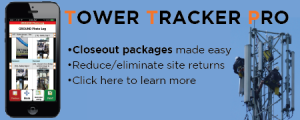Podcast: Play in new window | Download | Embed
Subscribe: Apple Podcasts | RSS
Drone update! Put Drones to Work! The eye in the sky (in the USA) is the FAA and they have laid out some drone pilot rules and. Your eye in the sky is your drone. As we move into an era of IOT, drones will play a larger part in businesses. In fact, there will come a day when drones will be traveling the skies much like the airlines do now. But first, let’s talk about some recent news before we get into what is to come.
First, let me thank the FAA for doing something about the tedious process we had for flying commercial drones, or Unmanned Aerial Vehicles, (UAS), finally. It was funny that for fun I could do almost anything with a drone but for business purposed I could only hover over my head after I took the full pilots course.
Now, you just need to follow these guidelines. Link to FAA fact sheet, https://www.faa.gov/news/fact_sheets/news_story.cfm?newsId=20516. The FAA was kind enough to put this list together, well, to be honest, it’s their job. They need to define the rules so that businesses can move forward. They were holding back a business that was ready to burst at the seams.
What is on the sheet? Here is a quick overview is taken right from the FAA document.
Sign-up to get all your updates!
Don’t miss an episode on iTunes or Stitcher or Overcast
Operational limits:
- Unmanned aircraft must weigh less than 55 lbs. (25 kg).
- Visual line-of-sight (VLOS) only; the unmanned aircraft must remain within VLOS of the remote pilot in command and the person manipulating the flight controls of the small UAS. Alternatively, the unmanned aircraft must remain within VLOS of the visual observer.

- At all times the small unmanned aircraft must remain close enough to the remote pilot in command and the person manipulating the flight controls of the small UAS for those people to can see the aircraft with vision unaided by any device other than corrective lenses.
- Small unmanned aircraft may not operate over any persons not directly participating in the operation, not under a covered structure, and not inside a covered stationary vehicle.
- Daylight-only operations, or civil twilight (30 minutes before official sunrise to 30 minutes after official sunset, local time) with appropriate anti-collision lighting.
- Must yield right of way to other aircraft.

- May use visual observer (VO) but not required.
- First-person view camera cannot satisfy “see-and-avoid” requirement but can be used if the requirement is satisfied in other ways.
- Maximum ground speed of 100 mph (87 knots).
- Maximum altitude of 400 feet above ground level (AGL) or, if higher than 400 feet AGL, remain within 400 feet of a structure.
- Minimum weather visibility of 3 miles from control station.
- There is so much more, download the PDF to get it all!
The Wireless Deployment Handbook Paperback and
 The Wireless Deployment Handbook eBook that covers professional carrier end to end deployment of LTE small cells, CRAN, and DAS showing you the proper way to plan for deployment then execute.
The Wireless Deployment Handbook eBook that covers professional carrier end to end deployment of LTE small cells, CRAN, and DAS showing you the proper way to plan for deployment then execute.
Remote Pilot Certification
- Establishes a remote pilot in command position.
- A person operating a small UAS must either hold a remote pilot airman certificate with a small UAS rating or be under the direct supervision of a person who does hold a remote pilot certificate (remote pilot in command).
- To qualify for a remote pilot certificate, a person must:
- Demonstrate aeronautical knowledge by either:
- Passing an initial aeronautical knowledge test at an FAA-approved knowledge testing center; or
- Hold a part 61 pilot certificate other than student pilot, complete a flight review within the previous 24 months, and complete a small UAS online training course provided by the FAA.
- Be vetted by the Transportation Security Administration.
- Be at least 16 years old.
- Demonstrate aeronautical knowledge by either:
- Part 61 pilot certificate holders may obtain a temporary remote pilot certificate immediately upon submission of their application for a permanent certificate. Other applicants will obtain a temporary remote pilot certificate upon successful completion of TSA security vetting. The FAA anticipates that it will be able to issue a temporary remote pilot certificate within ten business days after receiving a completed remote pilot certificate application.
- Until international standards are developed, foreign certificated UAS pilots will be required to obtain an FAA-issued remote pilot certificate with a small UAS rating.
A remote pilot in command must:
- Make available to the FAA, upon request, the small UAS for inspection or testing, and any associated documents/records required to be kept under the rule.
- Report to the FAA within ten days of any operation that results in at least serious injury, loss of consciousness, or property damage of at least $500.
- Conduct a preflight inspection, to include specific aircraft and control station systems checks, to ensure the small UAS is in a condition for safe operation.
- Ensure that the small unmanned aircraft complies with the existing registration requirements specified in § 91.203(a)(2).
- A remote pilot in command may deviate from the requirements of this rule in response to an in-flight emergency.
There is more in the PDF, go ahead and download it at https://www.faa.gov/news/fact_sheets/news_story.cfm?newsId=20516.
So here we are building a business case to do drone work at towers. I am all for it. It won’t replace the climber but it will make inspections so much easier. The video they can use today is just awesome; it can catch almost any flaw that can be seen. It can do measurements either with extreme HD video or Lidar. How cool is that? To be able ![]() to do these inspections at the site in so much less time. WOW!
to do these inspections at the site in so much less time. WOW!
To be able to do coverage testing, optimization, and assist in the close out of a site. WOW!
Don’t you worry, NATE has been looking at this for over a year! That’s right, they put together a guide for people to use at Vertical Communications Structures. I think they mean towers because most buildings in today’s world are communication structures. Link to NATE’s UAS around vertical structure PDF, https://natehome.com/wp-content/uploads/2016/05/UAS-Operations-Document-2nd-Edition-Jan-2017-E-FILE.pdf.
Nate’s UAS committee is made up of:
- Christopher Desmond (Verizon Wireless)
- Greg Emerick (Sentera)
- Jim Goldwater (Bob Lawrence & Associates)
- John Paul Jones (Tower & Turbine Technologies LLC)
- Robert McCoy (Crown Castle)
- Jimmy Miller (MillerCo, Inc.)
- Chris Moccia (Measure)
- Art Pregler (AT&T)
- Todd Schlekeway (NATE)
- Jim Tracy (Legacy Telecommunications, Inc.)
Nate’s UAS Committee has pledged to be a source of information by providing timely updates to NATE members and industry stakeholders. (They have more in the bulletin, so go ahead and download it!)
Learn more about NATE at www.natehome.com when you have time.
Back to Drones!
Look how far we have come in a short time! Everyone was so scared to share the videos they took, but now they can show them and share them and make money with them. This opens new businesses in more than just the wireless industry.
I see a future of drone air traffic controllers. Human and machine monitoring the drone traffic, creating and verifying flight paths, weather stations, and more. All of this is moving into reality as drones are being used to deliver stuff. Can you imagine? Drones will be a useful part of society that will alleviate the traffic off the road. You know, the roads where we will have self-driving cars. Less oil and gas being used because the batteries of the drone are getting better and better every year. Remote work and safety can be monitored real-time remotely or locally as drones will take over the skies for a small economical job.
Can you imagine when we can fly them using 4G and 5G systems to monitor and control them? We will have the flight path and mission already programmed in them, but the possibilities will be endless for what they can do I the air and where they can go. They could be used for microwave path inspection, aerial population inspections, emergency surveillance, and so much more. Someone will need to  monitor them and keep tabs on them, like air traffic controllers. Someone will need to collect the video. Not only that but they will be equipped with radar and be able to talk to each other to verify flight patterns. It will be a cool future.
monitor them and keep tabs on them, like air traffic controllers. Someone will need to collect the video. Not only that but they will be equipped with radar and be able to talk to each other to verify flight patterns. It will be a cool future.
Drones have already made an impact with the wow factor. We all loved the videos early on. Now we are trying to put that video to work. I don’t think just anyone will jump in when they see the price tag for the equipment needed. It’s not cheap, sometimes up to $100K per drone and camera. Then you need to get in a network of pilots to get referrals in your area. Then you need engineers that know the industry, in our case the tower and wireless industry. Don’t forget; you still need the training and certification! You need to be certified.
It’s not all good; they will be spying on all of us. It’s bound to happen. The police will start using drones more and more in rescue and criminal investigations. It’s only a matter of time until they start flying up to windows and looking in. Draw your blinds! I have some links below about some spy issues, good and bad.
So, there you have it. I have resources below if you’re interested in becoming drone certified or want to learn more.
Was the FAA too slow to make this happen? Find out what Keven Gambold of Unmanned Aerial Experts thinks https://wade4wireless.com/2016/06/14/keven-gambold-explains-using-drones-for-tower-work/.
Resources:
- Link to the FAA PDF, https://www.faa.gov/uas/media/Part_107_Summary.pdf
- Link to the FAA PDF regulations full, https://www.faa.gov/uas/media/RIN_2120-AJ60_Clean_Signed.pdf
- Link to FAA fact sheet, https://www.faa.gov/news/fact_sheets/news_story.cfm?newsId=20516
- Tower Safety Drone training class – http://towersafety.com/tower-safety-instruction-announce-new-improved-drone-class/
- Tower Safety drone training for audits – http://towersafety.com/drone_training_audits/
- Drone Cell Tower Inspect video from Tower Safety and Instruction – https://www.youtube.com/watch?v=HoOIuNVg9YA
- Link to NATE announcement about unmanned aerial systems operations, https://natehome.com/wp-content/uploads/2016/05/NATE-UAS-Operations-Around-Vertical-Communications-Infrastructure-Final-Document-1.pdf
- Link to NATE’s UAS around vertical structure PDF, https://natehome.com/wp-content/uploads/2016/05/UAS-Operations-Document-2nd-Edition-Jan-2017-E-FILE.pdf
- Remote pilot small unmanned aircraft systems certification standards – https://www.faa.gov/training_testing/testing/acs/media/uas_acs.pdf
- Remote Pilot Knowledge Test Guide – https://www.faa.gov/training_testing/testing/test_guides/media/r
 emote_pilot_ktg.pdf
emote_pilot_ktg.pdf - Knowledge Test Study Guide – https://www.faa.gov/regulations_policies/handbooks_manuals/aviation/media/remote_pilot_study_guide.pdf
- Knowledge Test Sample Questions – https://www.faa.gov/training_testing/testing/test_questions/media/uag_sample_exam.pdf
- Pilot’s handbook of Aeronautical knowledge – https://www.faa.gov/regulations_policies/handbooks_manuals/aviation/phak/
- Legal rights on spying drones:
- http://inpublicsafety.com/2015/04/court-rules-on-civilian-drones-used-to-record-police/
- http://www.courant.com/breaking-news/hc-hartford-drone-lawsuit-dismissed-0929-20150928-story.html
- http://www.theblaze.com/news/2012/06/25/did-party-goers-spot-a-miami-dade-police-drone-spying-on-a-beach-party/
- http://www.consumerreports.org/electronics/drone-privacy-is-anyone-in-charge/
- http://www.dailymail.co.uk/news/article-2134376/Is-drone-neighbourhood-Rise-killer-spy-planes-exposed-FAA-forced-reveal-63-launch-sites-U-S.html
- http://wfla.com/2015/11/05/drone-spying-on-you-find-out-your-legal-options/
- http://www.cnn.com/2015/01/22/world/drug-drone-crashes-us-mexico-border/
- http://www.thesmokinggun.com/documents/crime/drone-footage-leads-to-prostitution-conviction-178394
Be smart, be safe, and pay attention!
The foundations below do beautiful work, helping families in their time of need. Climbers often get seriously injured or die on the job. The foundations below support those families in their time of greatest need!
Hubble Foundation helps the families of climbers in a time of need!
Tower Family Foundation supports the families r tower climbers at the time of crisis when a climber falls.




